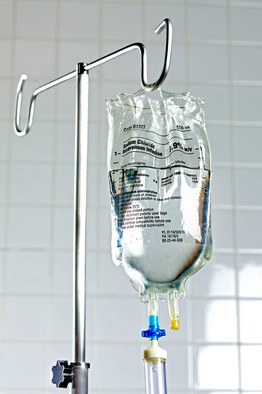
A few people who have read my book Vikings, Vampires, and Mailmen noted that during one scene when one of my guys was bitten by a bug, we immediately ran an intravenous (IV) line into his arm when there hadn’t been any obvious loss of blood. They’ve asked why we did that.
Well, there are actually a couple of reasons why this is a good idea.
The first reason we immediately start a line into a trauma patient is because, in our business, if you get bit you’re going to require a LOT of shots. I can’t stress enough how the mouth of a vampire is a garbage dumpster of diseases, viruses, toxins, and other nasty things. The risk of communicable diseases and infection is always 100%, so we pump bug attack victims with plenty of antibiotics and other cocktails I’m not going to discuss in detail. You can’t keep telling a guy to stick his arm back out for the many, many shots we administer, especially since we’re probably going to be doing this in a cramped environment where people are bumping into each other — the victim’s arm would look like a pincushion! When you run an IV you simply have to shoot each new syringe into the injection port of the bag/line instead of having to find a vein again.
Another reason we start an IV right away is because of blood pressure. Generally speaking, when a person is first injured their blood pressure is still very strong. As they bleed out, which can happen very rapidly, their blood pressure drops, and some of their blood vessels may start to collapse. What this means is that the longer you wait, the harder it’s going to be to start a proper IV. So in combat/street trauma, premature is always better than too late.
In the case of our guy that was wounded down in Wolf Bay, he had actually lost a lot more blood than we originally thought, as his most severe wound was concealed beneath the body armor on his upper leg. His clothing and armor actually pooled the blood, so until that armor came off, we couldn’t accurately assess the extent of his wounds. That being said, even when we got all his clothes off, we still wouldn’t have been able to accurately assess all of his wounds, as puncture wounds like handgun entry wounds or stab wounds often only show an entry point — not the severity of the injury. Internal bleeding is a real concern, and when blood is leaking out, additional blood, or at least saline must be added to keep blood pressure up.
So yes, we did indeed run an IV long before we suspected blood pressure was going to drop, and in that particular case we were right for both reasons. Once again, our job is rather unique, so as you read my books you’ll see that we do many things differently for very logical reasons. Cheers!
